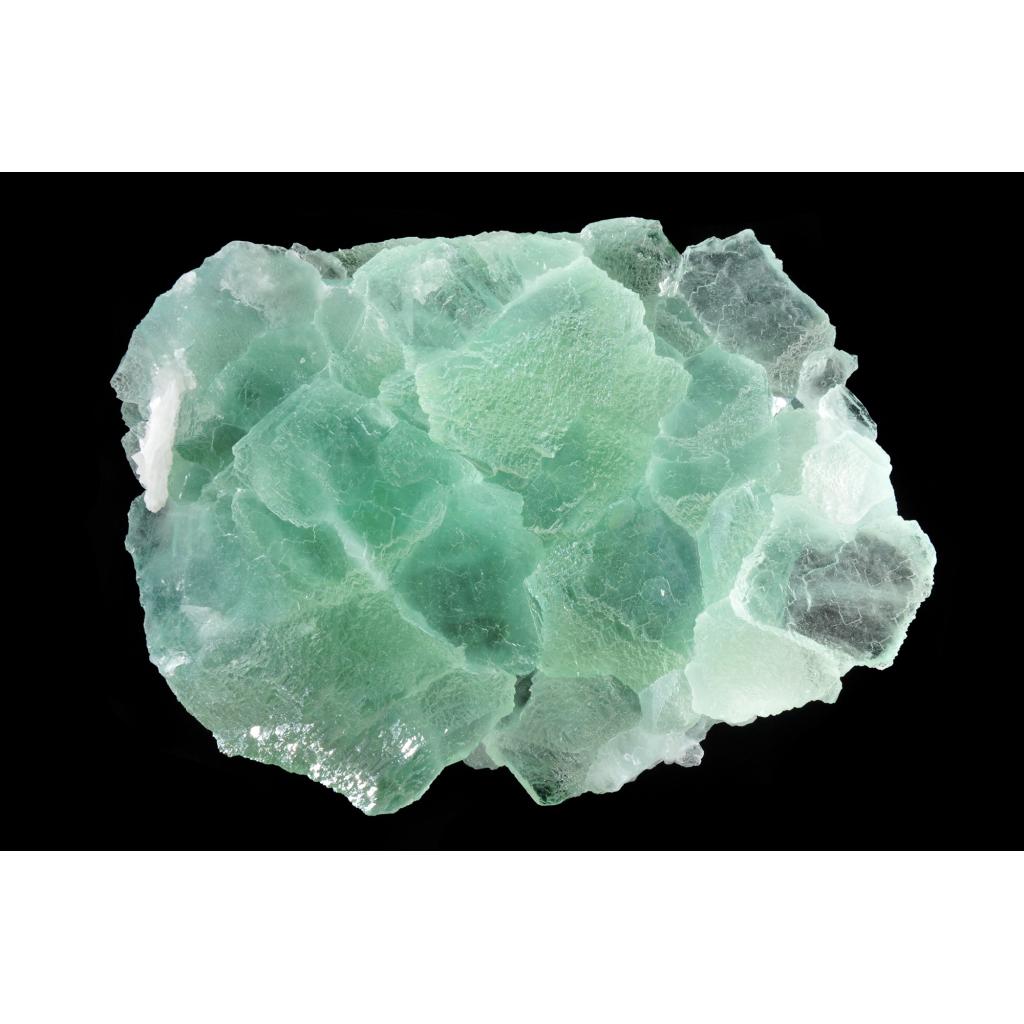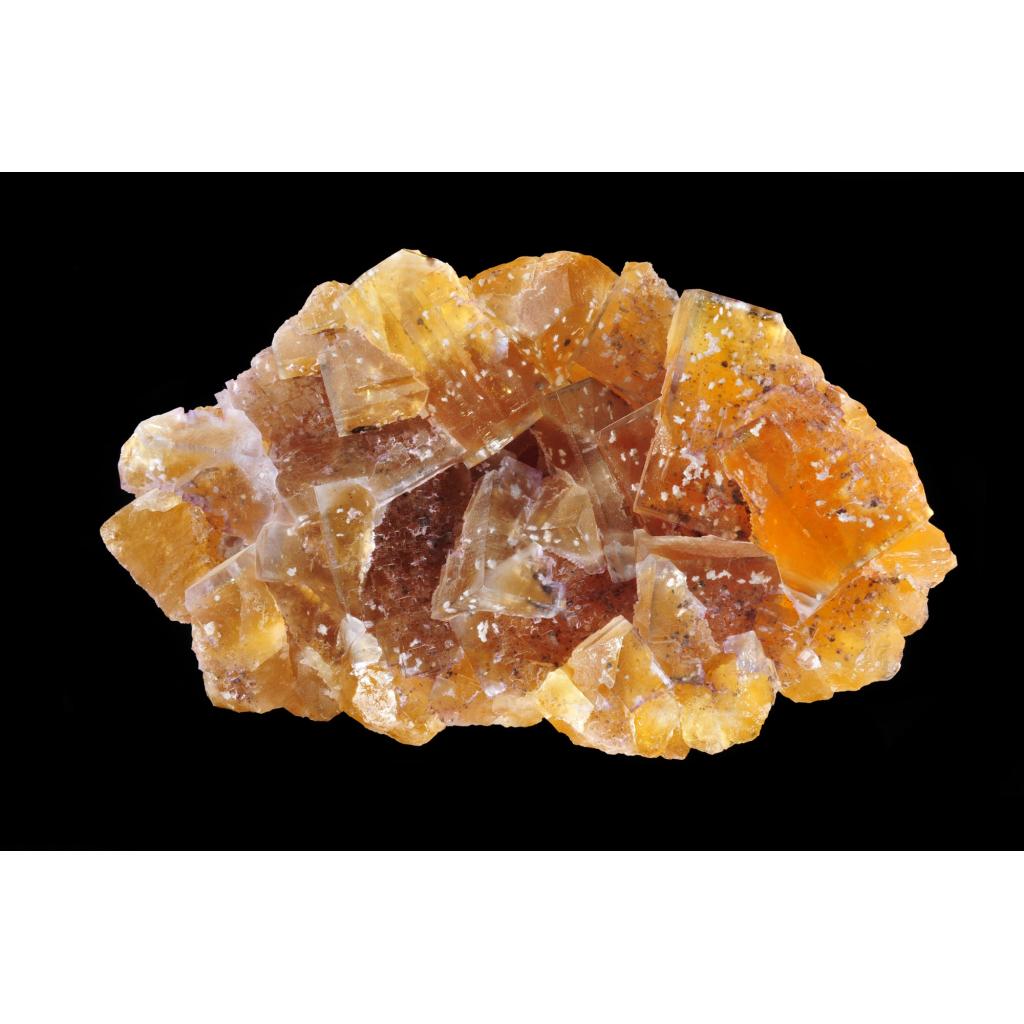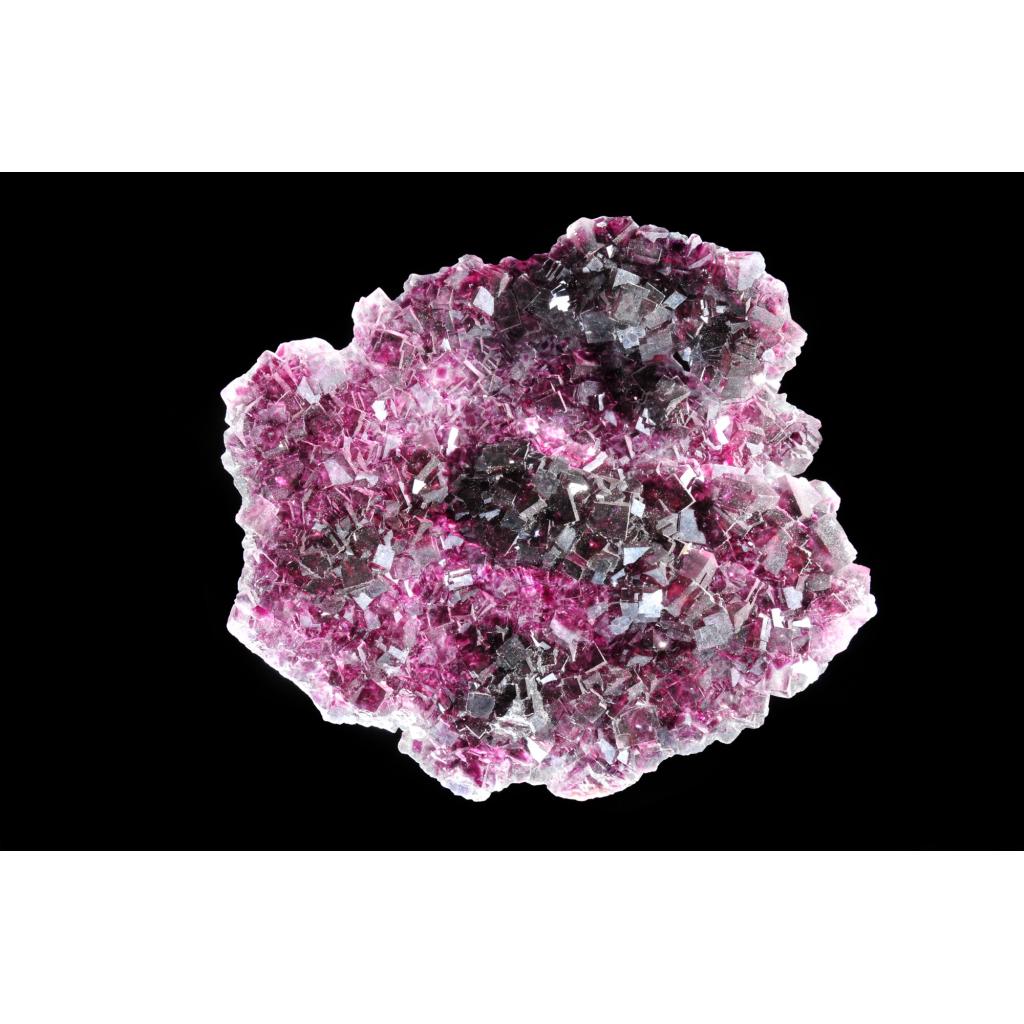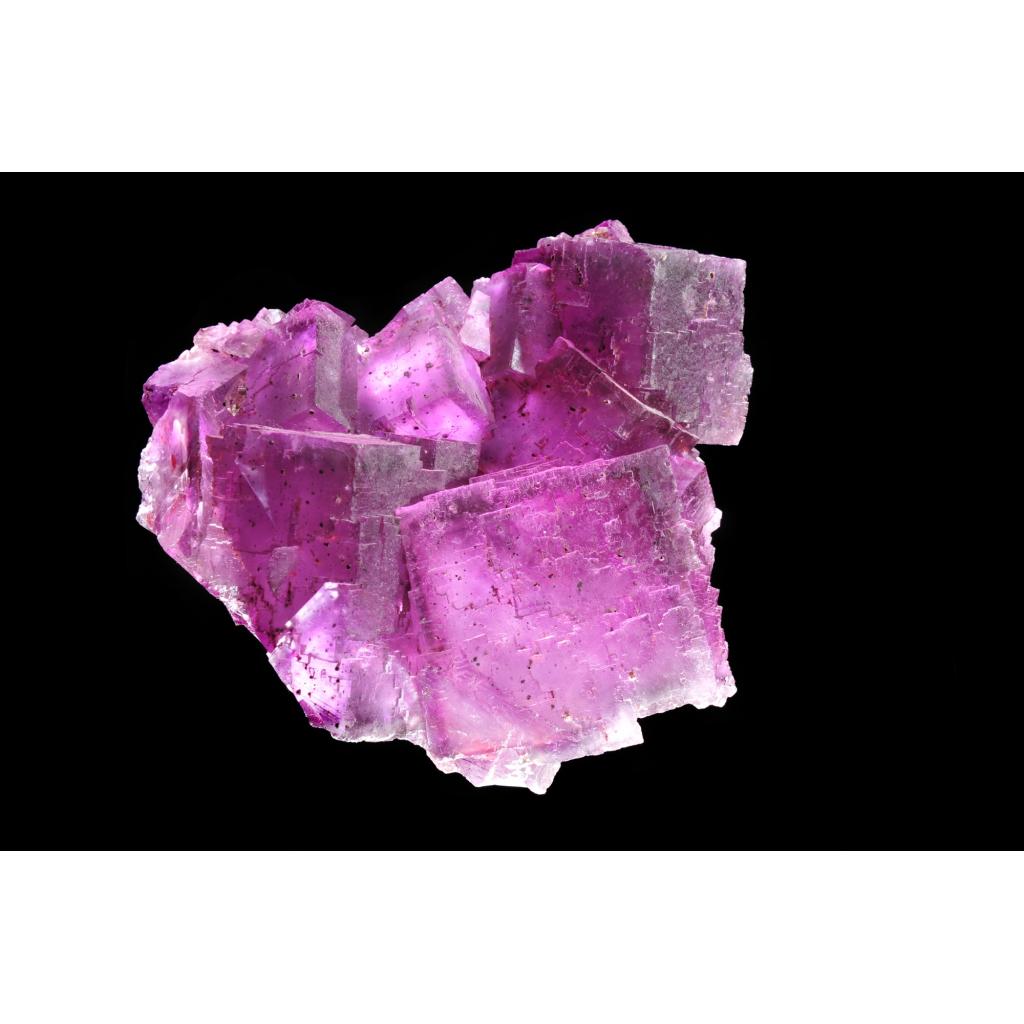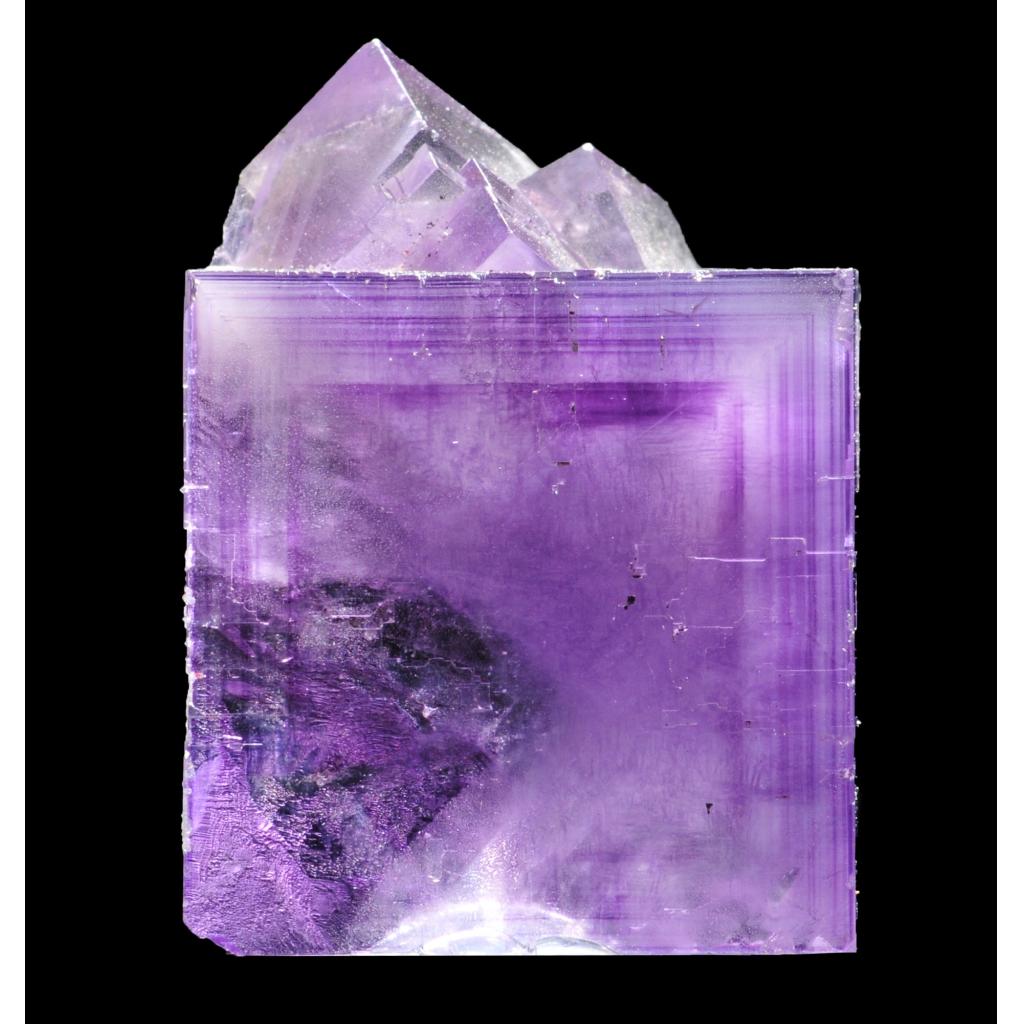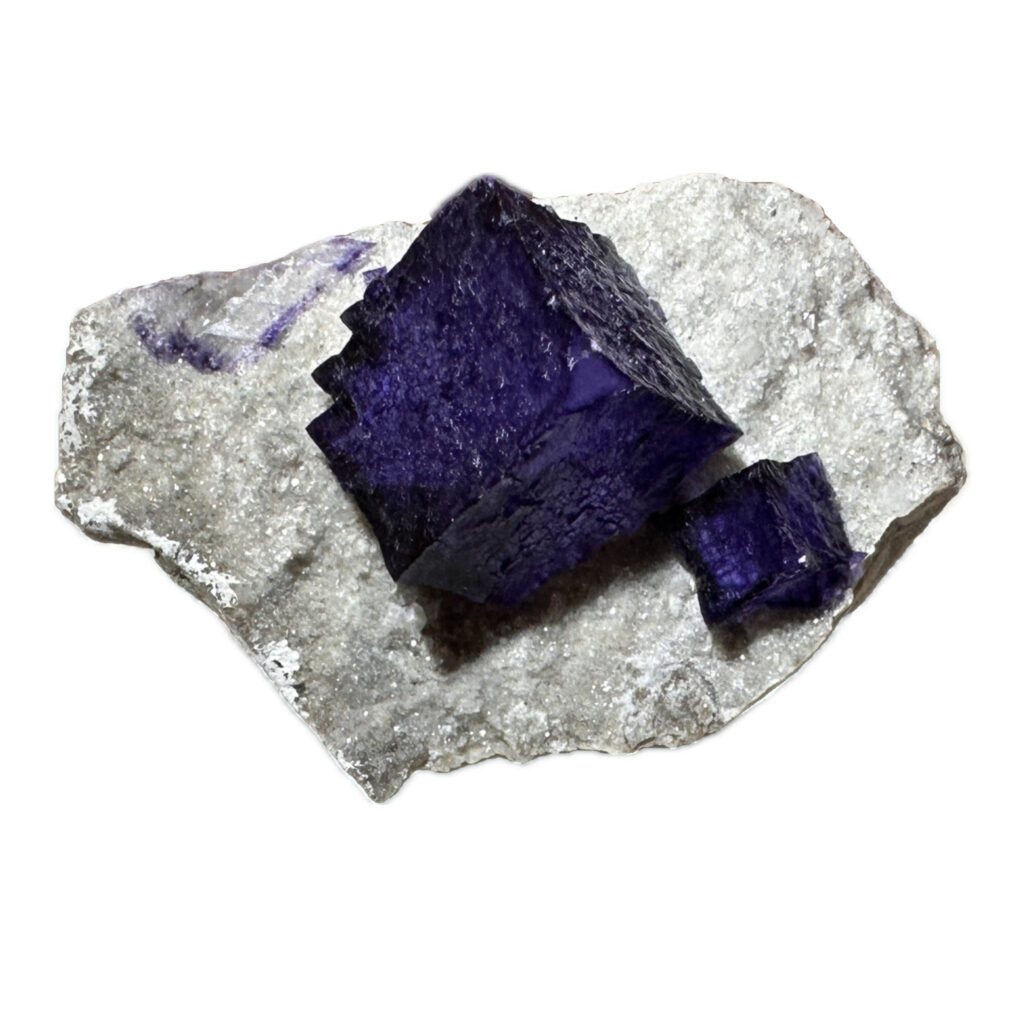
Fluorite is a fascinating and colorful mineral that belongs to the halide group. It is composed of calcium and fluorine (CaF2) and is known for its wide range of vibrant colors, often occurring in shades of purple, green, yellow, blue, and even colorless. The name “fluorite” is derived from the Latin word “fluere,” which means “to flow,” reflecting its use as a flux in metallurgical processes.
One of the remarkable features of fluorite is its strong fluorescence under ultraviolet (UV) light, which adds to its aesthetic appeal. The fluorescence is a result of certain impurities or structural defects in the crystal lattice. This property makes fluorite popular in the creation of ornamental and gemstone pieces, as well as in industrial applications.
Tennessee, USA, is home to several fluorite mines, contributing to the global production of this mineral. The Elmwood Mine, located near Carthage, Tennessee, is renowned for its fluorite deposits. This mine has been a prolific source of fluorite specimens with various colors, including deep purple and blue. The Elmwood Mine has also yielded fluorite crystals with exceptional transparency and large crystal formations.
Another notable fluorite mine in Tennessee is the Columbia Mine in Maury County. The Columbia Mine has produced fluorite specimens with rich purple and green colors. It has been an important locality for fluorite collectors and mineral enthusiasts.
Beyond Tennessee, fluorite deposits are found in numerous countries around the world. China is a major producer of fluorite, with significant deposits in provinces such as Hunan, Zhejiang, and Fujian. The Cave-in-Rock mining district in Illinois, USA, is renowned for its fluorite mines, including the namesake Cave-in-Rock Mine. The Illinois deposits have produced fluorite crystals in various colors, and the region has been an important source for both collectors and industrial users.
In Mexico, the Naica Mine in Chihuahua is famous for its massive gypsum crystals, but it has also yielded impressive fluorite specimens. These specimens often display vibrant colors and are highly sought after by collectors. The Okorusu Mine in Namibia is another notable fluorite locality, known for its large, transparent crystals in hues of green and purple.
In Europe, the Rogerley Mine in County Durham, England, has gained recognition for its fluorite deposits. The mine is unique because it produces fluorite crystals in a classic English mineral specimen style. The fluorite specimens from Rogerley often exhibit sharp cubic crystals with a distinctive green or purple color.
Fluorite’s industrial applications extend beyond its role as a collector’s gem. It is a valuable flux in metallurgy, aiding in the reduction of melting points during the refining of metals. Additionally, fluorite is used in the production of hydrofluoric acid, which is crucial in various industrial processes, including the manufacturing of aluminum, uranium fuel, and refrigerants.
The mining and extraction of fluorite require careful consideration of environmental impacts, and sustainable practices are increasingly emphasized in the industry. Reclamation efforts and responsible mining practices help mitigate the ecological footprint of fluorite extraction.
In conclusion, fluorite is a captivating mineral with a rich diversity of colors, and its unique fluorescence adds to its allure. Tennessee, particularly the Elmwood and Columbia Mines, has played a significant role in the global production of fluorite. However, fluorite deposits are found worldwide, with notable mines in countries like China, the United States, Mexico, Namibia, and England. The mineral’s applications extend beyond the realm of aesthetics, as it plays a crucial role in various industrial processes. Balancing the extraction of fluorite with environmental considerations is vital for the sustainable development of this valuable mineral resource.
